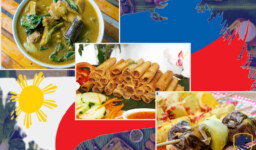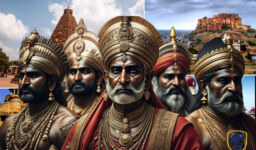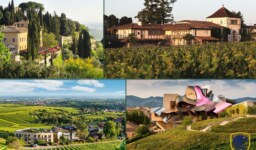We love festival seasons; don’t we? Festival seasons allow us to get our lives derailed from the same boring schedule. There are numerous kinds of festival occasions celebrated around the world. There are unique traditions and rituals which have been knitted around them. So today we are going to explore the most colorful festivals that are celebrated around the world. Next time when you are traveling to these countries, don’t forget to visit during the festival season and obtain that amazing experience.
Holi, India
For Indians, Holi is the one festive occasions that need no introduction. This Hindu festival, which is yearly held between February and March, is one of the most well-known and vibrant celebrations in the whole globe. Although Holi is a worldwide holiday, the major celebrations take place in India and Nepal. It heralds the arrival of spring and commemorates the victory of virtue over evil. People assemble in public spaces to celebrate Krishna and Radha’s love by dousing one another with colored powder. Everyone, regardless of age or gender, enjoys playing with water and colors because it fosters community and a sense of solidarity.

Most Colorful Festivals Around The World; Holi, India
Busan International Fireworks Festival, South Korea
As mentioned in the name, this festival is a celebration of fireworks. The 4.5-mile-long Gwangan Bridge, which is situated not far from the shoreline and faces the Sea of Japan, caters to the vista from one end to the other. People are eagerly waiting for side by side. The performance starts while the sky is completely black.
The Busan Fireworks Festival, one of Asia’s most breathtaking fireworks displays, is focused on the Gwangan Bridge. The week-long celebration, which features tens of thousands of cutting-edge pyrotechnics and laser exhibitions, attracts more than 2 million spectators. The exhibit spans the whole bridge. Furthermore, fireworks of various colors and forms are frequently synchronized together to form complete compositions along the bridge and high in the night sky.

Busan International Fireworks Festival, South Korea
Chinese New Year
Chinese New Year, which is also known as the Lunar New Year or the Spring Festival, is ritualized throughout China and other countries. It is traditionally a 15-day festival that commemorates the beginning of the first month in the traditional Chinese lunisolar calendar. Chinese New Year is celebrated worldwide with the Lantern Festival, which itself signifies the conclusion of the festivities. Of course, every nation conducts it slightly differently. As multicolored decorations are an essential component of each Lunar New Year celebration, the event erupts in a riot of color and music.
Dragons dancing in rainbow colors may be seen in the streets, and residences decorate elegantly with plants, flowers, and paper lantern strings. Moreover, the night sky is illuminated by pyrotechnics. Nowhere in the many parades will you find two identical floats in terms of design, color scheme, or topic. The people also dress colorfully, primarily in traditional attire, and partake in a variety of unique foods. Chinese New Year festivities typically take place in late January or early February.

Most Colorful Festivals Around The World; Chinese New Year
Rio Carnival, Rio de Janeiro
Rio Carnival is different from any other celebration in the world. It might be challenging to imagine Brazil’s capital city without conjuring up images of Carnival. Carnival is one of the most thrilling and well-known cultural celebrations globally, which Rio de Janeiro demonstrates. It is based on celebrations honoring the wine deity Dionysus from ancient Greece. But with time, the Romans changed Carnival to honor their gods.
Later, the Catholic Church made changes and schedule the celebration for right before Lent. Rio de Janeiro holds the distinction of “Carnival capital of the world” thanks to its vibrant costumes, throbbing music, entrancing float shows, and explosive energy.

Most Colorful Festivals Around The World; Rio Carnival, Rio de Janeiro
Madeira Flower Festival – Spring
The Madeira Flower Festival is a colorful celebration to enhance the joy of spring. It takes place in May when the flowers start to blossom. Children dressed in lovely floral costumes march through Funchal’s streets with flowers. They will later place on the “Wall of Hope,” which is constructed entirely of flowers.
A variety of bouquets, embroideries, and regional foods and drinks are available at booths along Avenida Arriaga, which is lined with flower carpets and floats. This culture and environment, and the vibrant displays make it a photographer’s paradise.

Most Colorful Festivals Around The World; Madeira Flower Festival – Spring
The MassKara Festival, Philippines-
Nothing could be better than a festival to bring joy to life while enjoying the sight of the vibrant masks, right? The MassKara celebration is performed in the Philippines on the fourth Sunday of every October. It is a colorful journey that is full of joy and was created as a way to avoid life’s darkness. The significance of this festival’s celebration is equally wonderful. The nation’s residents had a challenging financial crisis in the 1980s. A catastrophe happened, killing hundreds of people, and compounding the issues. Therefore, in order to offer some hope and optimism to a life filled with gloom and a mood of despair, the residents decided to celebrate something new and hold this festival.

; The MassKara Festival, Philippines-
Harbin International Ice Festival, China
The largest ice and snow festival in the world is the Harbin International Ice Festival, which takes place yearly in Heilongjiang Province in northeastern China. The festival consists of many theme parks, each of which has a different event and stunning ice sculptures. Both children and adults slide down the slide as friends take photographs of them. Turning back, it’s not even worthwhile to try to locate a passage through the maze of ice structures, some of them are more intimidating with a single color dispersed across the walls. The outcome is nearly blinding.
The Harbin International Ice Festival sees the construction of a full-size neighborhood constructed of ice structures. All of the buildings are formed of enormous ice blocks and lighted by light shows, yet some of them resemble structures straight out of fantasy novels while others are based on real architecture.

Harbin International Ice festival, China
La Tomatina, Buñol, Spain
Who doesn’t remember the Spanish La Tomatina event from Zindagi Na Milegi Dobara? This event, however, makes the desire to create a mess from childhood a reality. People toss ripe tomatoes at one another during this celebration in the Spanish village of Bunol. This celebration, which began in 1945, is comparable to a large food battle. Everywhere celebrates it on the final Wednesday in August. People will be coated in orange-reddish tomato mush, and the streets will also be a similar color that day as a result of the overripe tomato mess. This vibrant festival is a genuine representation of other vibrant celebrations throughout the world.
Over 50,000 people have already attended this renowned La Tomatina. However, currently, 20000 or fewer people can purchase tickets. The hour-long fight starts with water cannons shooting and lasts throughout which over 100 tons of overripe tomatoes are crushed and flung.

Most Colorful Festivals Around The World; La Tomatina, Buñol, Spain




